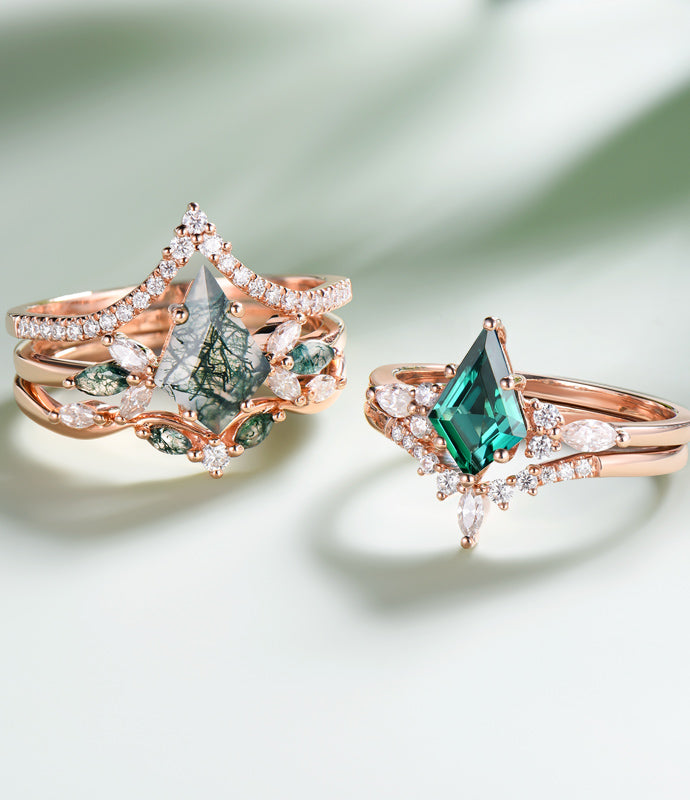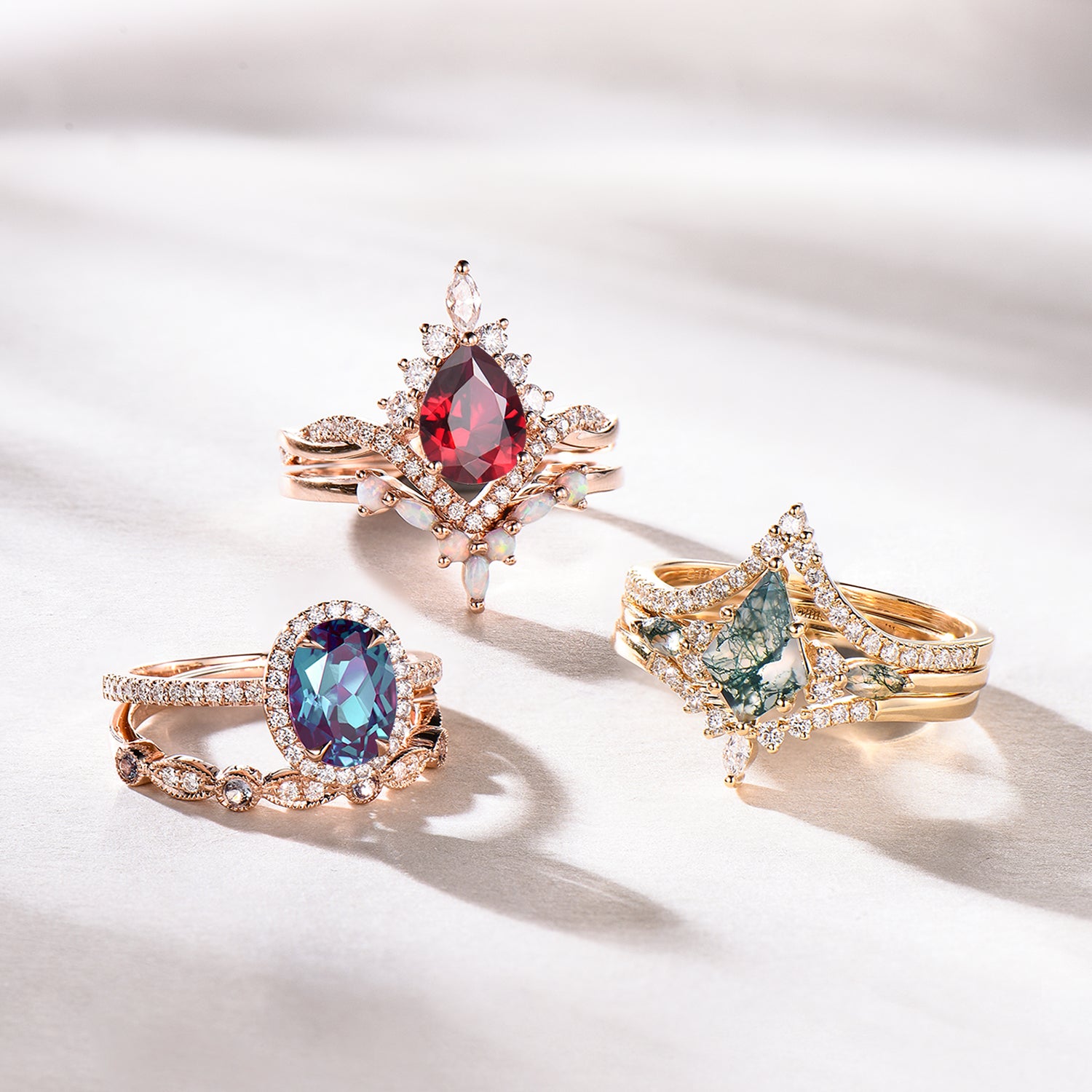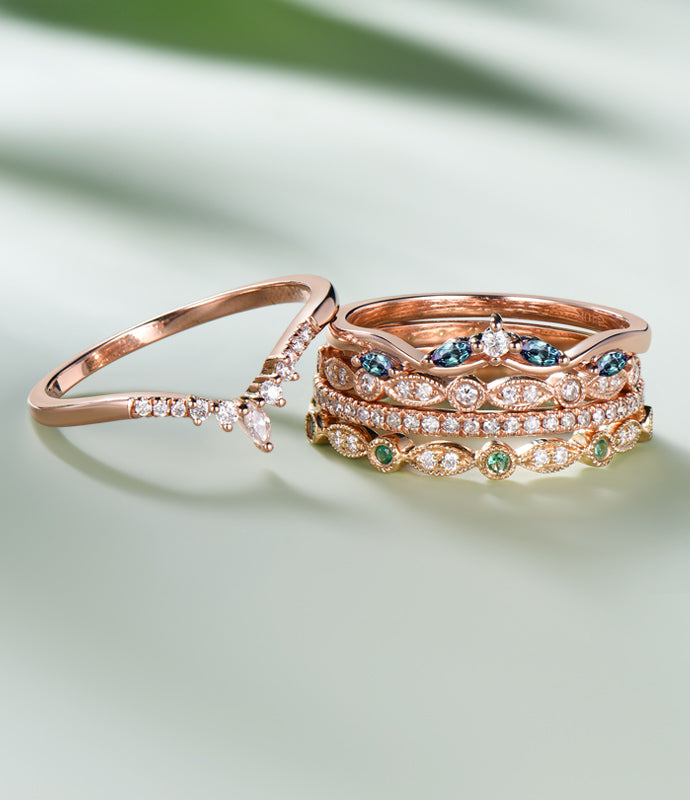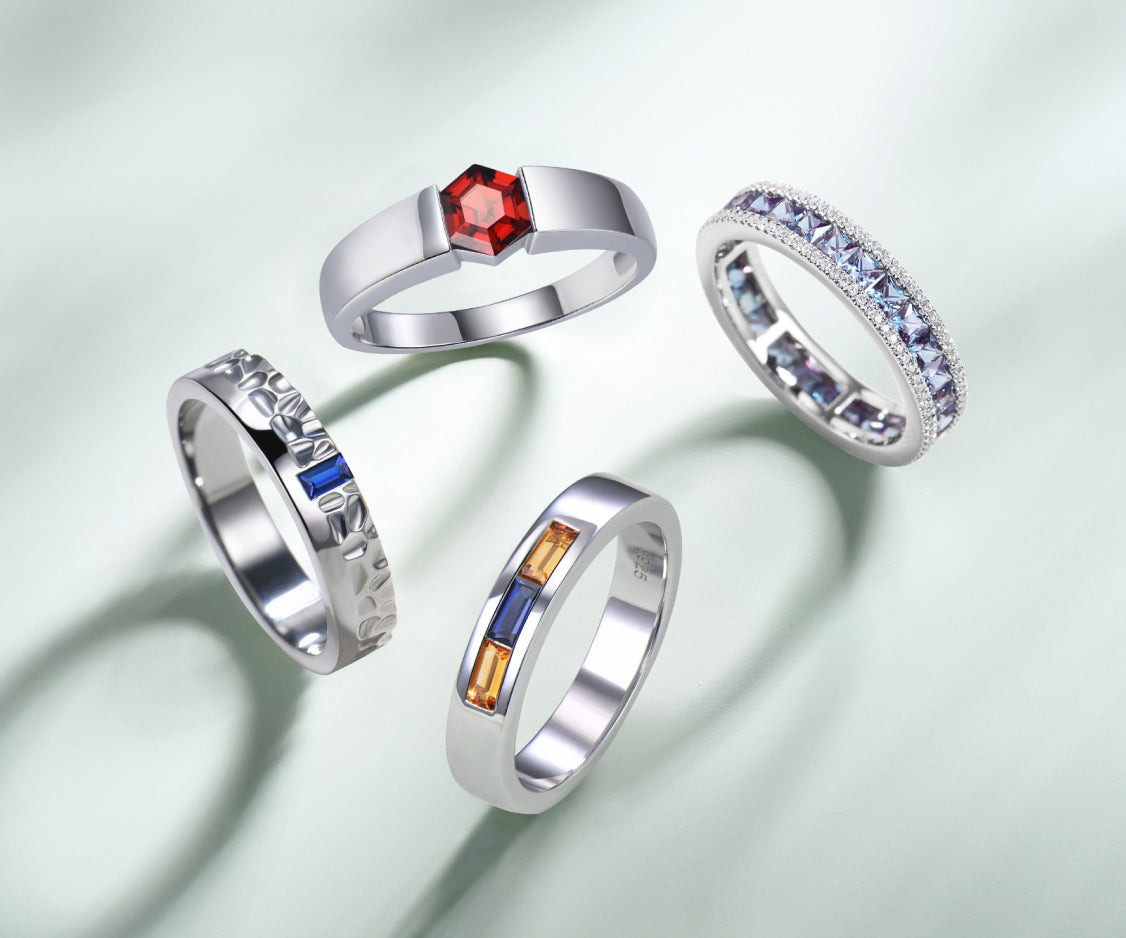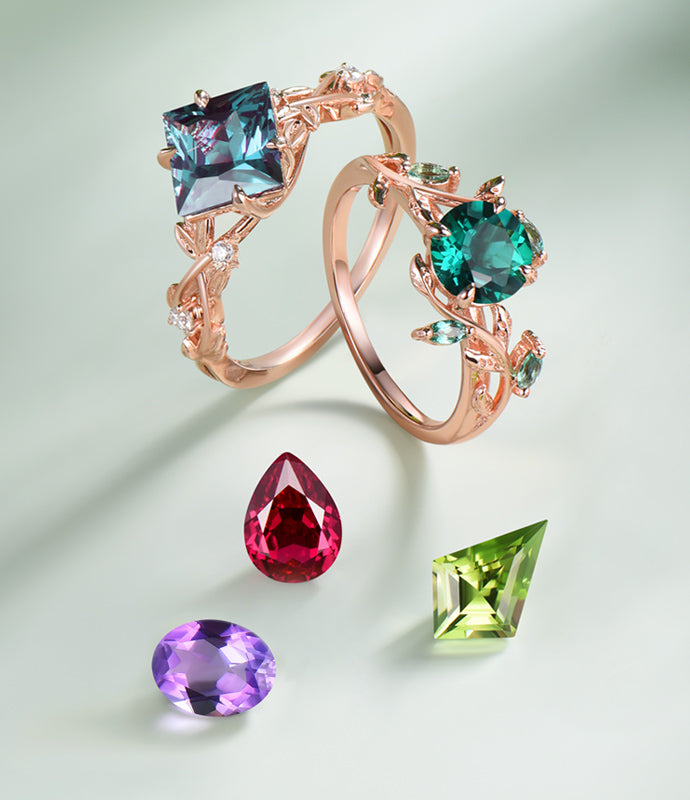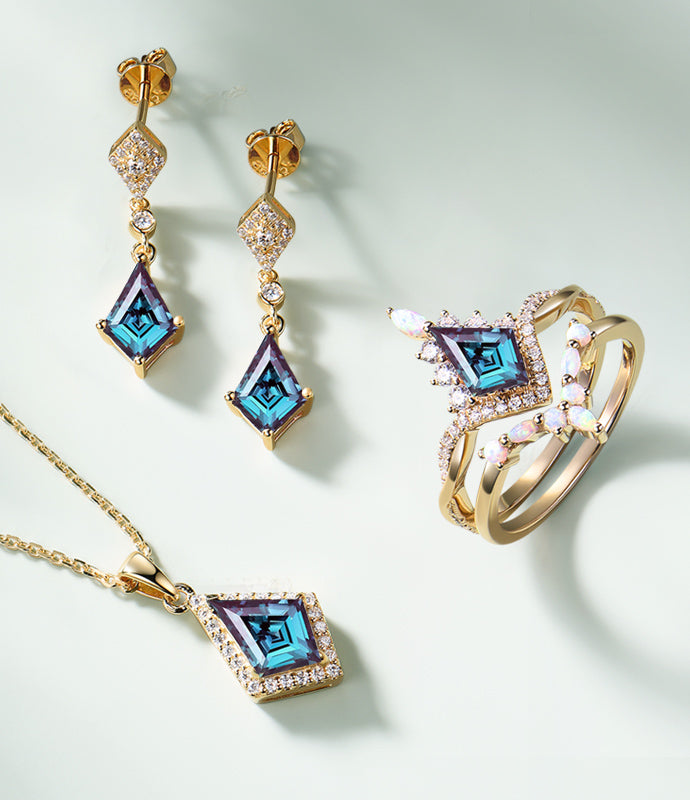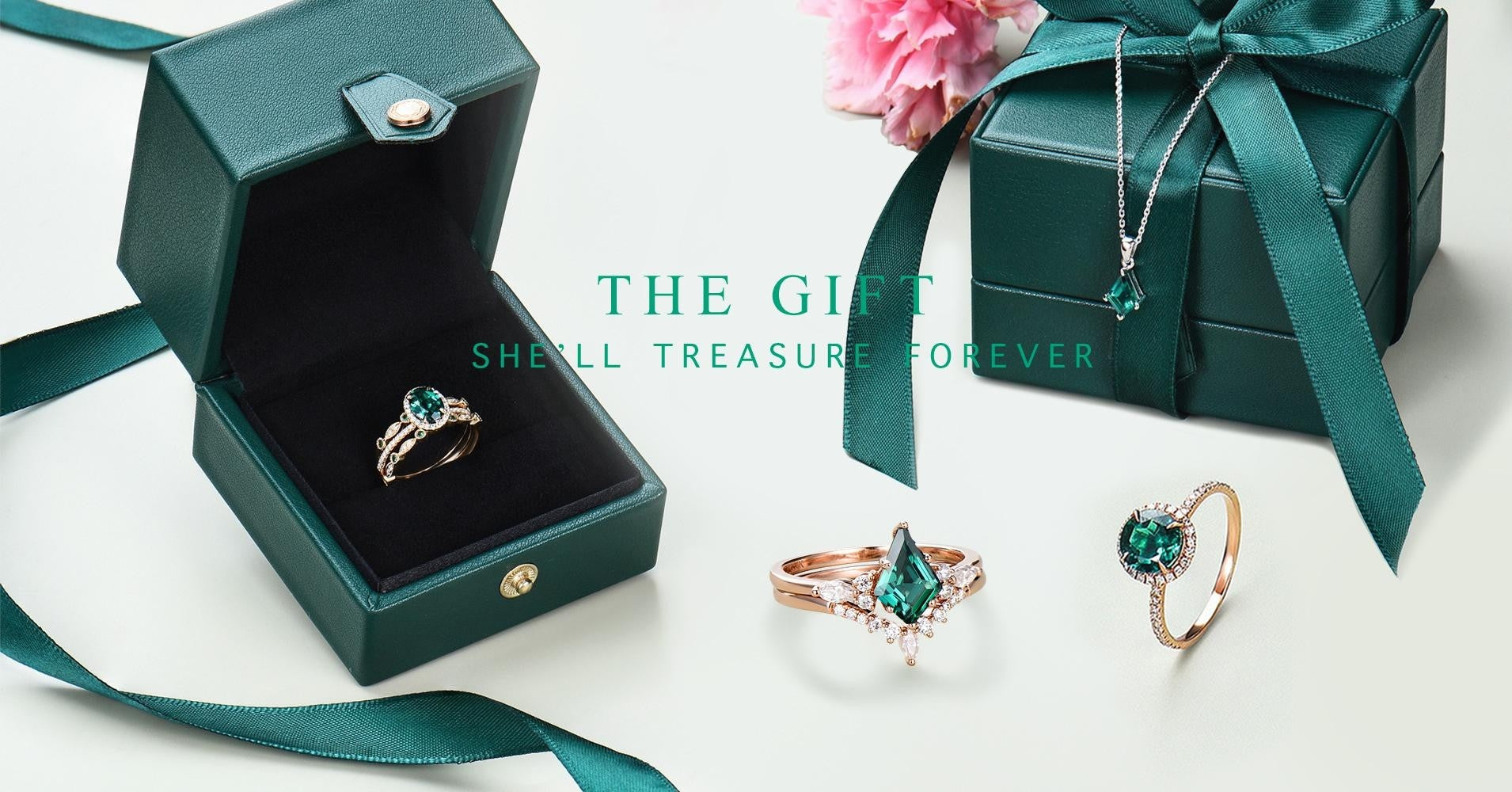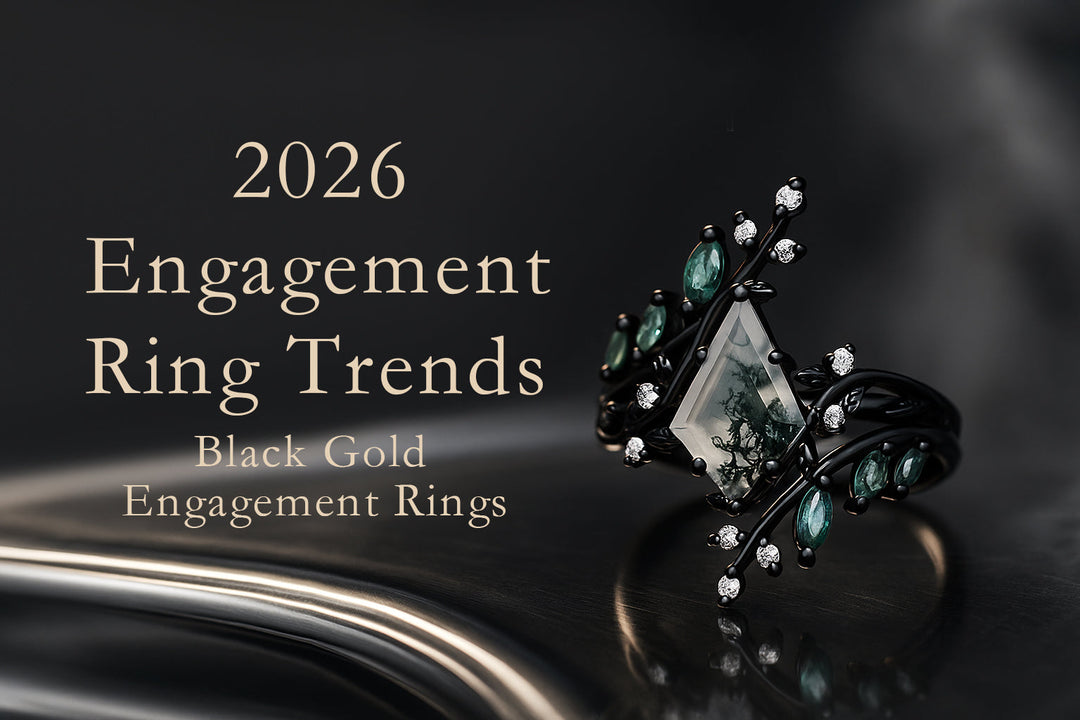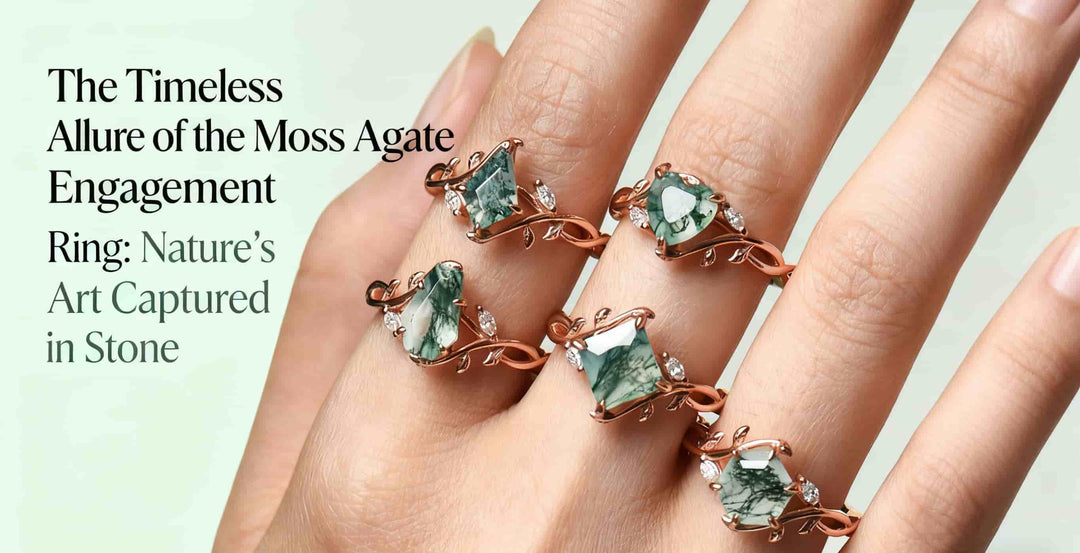Men's And Women's Wedding Bands Width Guide
Several things go into the appearance and design of wedding bands and engagement rings, but the band's width is frequently disregarded. Since these are the rings you'll likely wear every day, they should not only reflect your unique style but also provide comfort and suit your lifestyle for easy wear.
Even a slight difference in ring band width can make a significant impact on comfort. Once the ring is on your finger, those subtle millimeters can determine whether wearing it is a pleasure or a nuisance. While trying on various band widths is always a good idea, you can also figure out your ideal width ahead of time, and we’re here to help you with that process.
Understanding Ring Band Widths
Ring size is often confused with ring width, but they refer to two different aspects of the ring. Ring size indicates the diameter of the ring, which corresponds to the size of your finger. On the other hand, ring width refers to the thickness of the band itself. Wedding and engagement bands are typically anything from 1.6 to 20 millimeters in width, with most people choosing between 1.6 and 8 millimeters.
The width you choose ultimately depends on your personal preferences, style, and comfort, but there are common width sizes for both women’s and men’s rings.
● Women's rings generally range from 1.6 millimeters to 4 millimeters in width. Bands on the thinner end, around 1.6 or 1.8 millimeters, are often seen in half sizes and feature ultra-thin designs, offering a delicate and subtle look.
● Men’s rings typically range from 4 millimeters to 7 millimeters in width, offering a more substantial and bold appearance compared to women’s rings.
A simple way to visualize different ring band widths is by using coins. A nickel is approximately 2 millimeters wide, and a penny measures about 1.5 millimeters. By holding a few coins up to your finger, you can get a rough idea of what ring widths from 1.5 millimeters to 10 millimeters (or more) would look like on your hand.
While any metal can be used for a ring band, the width plays a significant role in determining the most suitable material for durability and longevity. For thinner bands, we recommend using more durable metals. Softer metals, such as high-purity gold, can be prone to bending or losing shape if the band isn’t thick enough. When working with softer metals like gold, it’s advisable to use a lower karat, such as 14k instead of 18k, to ensure a stronger, more resilient gold alloy.
Advantages and Disadvantages of Wide vs. Thin Ring Bands
When comparing wide and thin ring bands, each has its own set of advantages and drawbacks based on individual preferences.
Wide bands offer a modern, contemporary look and pair well with settings like bezels, such as the one featured in our Hanem design. Their increased durability allows them to be made from a wider variety of metals, and they provide ample space for unique design elements like fingerprint engravings or deep channel settings. However, the downside is that the additional metal increases the cost of the band before considering any stones or settings. Wider bands often require larger ring sizes, making them harder to fit comfortably over the knuckle, which can also drive up the price. Additionally, the larger size and more metal can make resizing more difficult.

8mm Brushed Finished Band Mens
On the other hand, cheaper bands are often thinner because, in their construction, they have less metal. They also make bigger center and side stones seem more striking, and because they’re larger, they bring more design flexibility, which can be seen with twists and rope patterns. Thin bands are also comfortable and easy to resize. They are generally less durable and will sometimes wear out more quickly. Because the weight of the stone can make the band shift on the finger, bands can give up that support to a larger stone or more complex setting. In addition to being hard to achieve, some design features, such as channel setting and side stones, are limited to the surface area.

1.4mm Vintage Curved V shaped diamond wedding band
Choosing an Engagement and Women’s Wedding Band Width
Setting style is one of the most critical decisions to be made when choosing an engagement ring. The size of the stone, coupled with its setting, informs the ideal band width to accommodate certain design elements without sacrificing the structural integrity of the ring.
Thinner to medium-width bands are flexible enough to fit a wide range of design features and settings. On the other hand, wider bands tend to be more minimalist since they make a statement in themselves. Moreover, the wider the band, the more difficult it is to incorporate intricate features.
The main balance in the structural integrity of an engagement ring is the relationship between the stone's size and the band width. The larger the stone, the more it can overpower a thinner band and compromise the security of the setting. On the other hand, a very wide band can make the center stone appear much smaller than it really is, taking away from its size and brilliance.
If the width of the engagement ring is determined, many try to have the wedding band the same width for harmony in its appearance. However, a very modern trend and what works best is not always matching band widths but different band widths, adding a nice, deep dimension to the whole set, especially when combined with the trend of wearing stacked rings.
While mixing band widths for engagement and wedding rings is one of the fast-growing trends, what matters most is choosing a band that best suits your finger and hand. Comfortability and aesthetics go hand in hand when it comes to the width of the band being worn. Here are some tips to help you get the right fit:
● A wider band will overwhelm the hand if you have small hands or thin fingers, but a narrower band balances it out.

6mm Baguette cut alexandrite wedding band men half eternity
● For wider fingers or knuckles, a thinner band could be easier to slide on or off.
● With a more substantial width, select one-half to one full size larger because it must go over your knuckles and feel comfy on your finger.

4mm Baguette cut moss agate wedding band men
Choosing a Men’s Wedding Band Width
Men's wedding bands come in a wide variety of metals, designs, and, most especially, band widths. Generally, men's bands are larger, usually starting at 4 mm to upwards of 8 mm, a reflection of the generally larger hands and fingers of men.
Just like in women, however, the decision between a thinner or wider band is based on several factors. For instance, men with slender fingers may want to wear narrower bands, which would better match the proportion of their hands. On the other hand, some men may find that a wider band, with its fuller fit and weight, can feel cumbersome during daily activities.
Lifestyle and daily habits should be major considerations when choosing a band. Because wedding bands are worn constantly and are intended to last for many years, men with active, hands-on lifestyles may appreciate the added durability of a wider band. Those who anticipate less wear and tear may find that a thinner band serves them just as well.
For many contemporary buyers, a narrower band carries a sense of classic sophistication. A thinner band offers a sleek, classic style, especially when finished with a high polish and no added embellishments. Meanwhile, a wider band makes quite a bold statement, allowing more space for textured designs, carvings, or even gemstones that allow for a more unique, personalized ring.

5mm Hammered Mens Moss agate Wedding Band Baguette Cut
Conclusion
Ultimately, the ideal width of a ring band is one that balances comfort with personal style. At the end of the day, your satisfaction with the ring is what truly matters, and trying on a few band widths can be a great way to find what feels right. Take your time, ask questions, and choose the one that best suits your needs and preferences.




